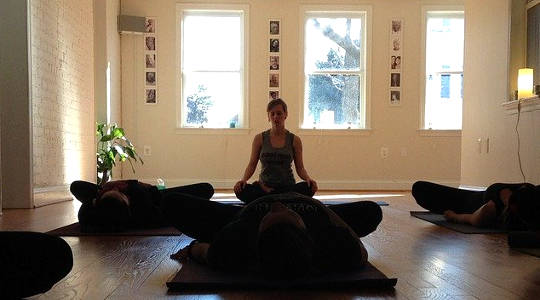
Having a quiet mind is lovely, and there are some simple manual tasks that you can do with a quiet mind: washing dishes, raking leaves, sweeping floors. But there are other tasks that are a bit more complex, where keeping a perfectly quiet mind may be inappropriate or even unsafe.
For instance, imagine you are driving a car, and a ball rolls out into the street. If you have a perfectly quiet mind, you may be very aware of the ball — its color, its shape, and everything else about it in the present moment. But because you are anchored in the present moment, you might not think ahead to what is likely to occur in the very next moment — which is, of course, that a child might run out into the street after the ball.
It’s still possible to quiet our thinking while paying attention and responding to important signals in our environment. Mental noting allows a bit of inner speech while we remain focused on the present moment.
Mental notes anchor you in the present moment and monopolize your inner speech. You come up with a word or phrase that describes what you’re doing. It’s like a mantra, except that the words change as you change what you’re doing.
An advantage of this practice is that it can fill in the gaps between the thoughts that let you keep track of what you’re doing, so that distracting thoughts don’t creep in. Our minds operate faster than our limbs. You can have five different thoughts while walking to the closet to find your rain jacket. By the time you get to the closet, you may have forgotten why you were going there. Mental noting keeps the focus on the present.
Exercise: Mental Noting of Actions
The first time, try this for just 30 seconds.
Make a mental note of every action you do. Let’s say you just arrived at your front door and are about to enter the house. Your noting might run along these lines: reaching into pocket, pulling out key, slipping key into lock, turning knob, opening door, entering, closing door, and placing keys on counter.
These are things you might do automatically, but when you note them, there is a greater intensity about them.
It’s hard to do this noting for an extended period, but even a thirty-second practice will have an impact. After a while, you won’t necessarily have to note your actions in words. You’ll just be paying more attention to movements you otherwise do without thinking.
Next, try mental noting while you’re doing something more complex, such as cooking. Assembling ingredients and preparing them in the right order takes a bit of thinking. You can’t necessarily cook with a quiet mind, but you can focus on the task at hand by inserting mental notes. They could be chopping, slicing, rinsing, turning on burner, covering pot, and so on.
Notice the moments when you feel bored. What can you notice about the aroma, color, or temperature of the food that makes the experience more interesting? At what points are things too hectic for you to note your actions?
The Dos and Don'ts of Mental Noting
You may find that mental noting interferes with some activities, such as reading. Most people, including me, subvocalize as they read — pronouncing the words in their head. For me, adding the word reading into that inner stream of thought interferes with comprehension of the text.
While driving a car, a meditation on the breath would be unsafe, because it would take your attention away from the road. But mental noting of your driving can help focus your attention on the road. Your noting might include checking mirror, driving, signaling lane change, checking for merging traffic, and so on.
When you’re doing this, interpret the “present moment” more broadly than you might do in a breath or sound meditation. You often need to think at least a few seconds ahead when you’re driving. Think of the present as the task at hand, rather than what is happening at this exact second.
Whatever you do, remember to bring an attitude of kindness to your notes.
©2015 by Rick Heller. All Rights Reserved.
Reprinted with permission of the publisher,
New World Library, Novato, CA 94949. newworldlibrary.com.
Article Source
 Secular Meditation: 32 Practices for Cultivating Inner Peace, Compassion, and Joy
Secular Meditation: 32 Practices for Cultivating Inner Peace, Compassion, and Joy
by Rick Heller.
Click here for more info and/or to order this book.
About the Author
 Rick Heller is a freelance journalist and meditation instructor. He is the facilitator of the Humanist Mindfulness Group and has led meditations sponsored by the Humanist Community at Harvard since 2009. Rick holds a bachelor's degree in electrical engineering from MIT, a master's degree in public policy from Harvard University, and a master's degree in journalism from Boston University. Visit his website at www.rickheller.com
Rick Heller is a freelance journalist and meditation instructor. He is the facilitator of the Humanist Mindfulness Group and has led meditations sponsored by the Humanist Community at Harvard since 2009. Rick holds a bachelor's degree in electrical engineering from MIT, a master's degree in public policy from Harvard University, and a master's degree in journalism from Boston University. Visit his website at www.rickheller.com

























